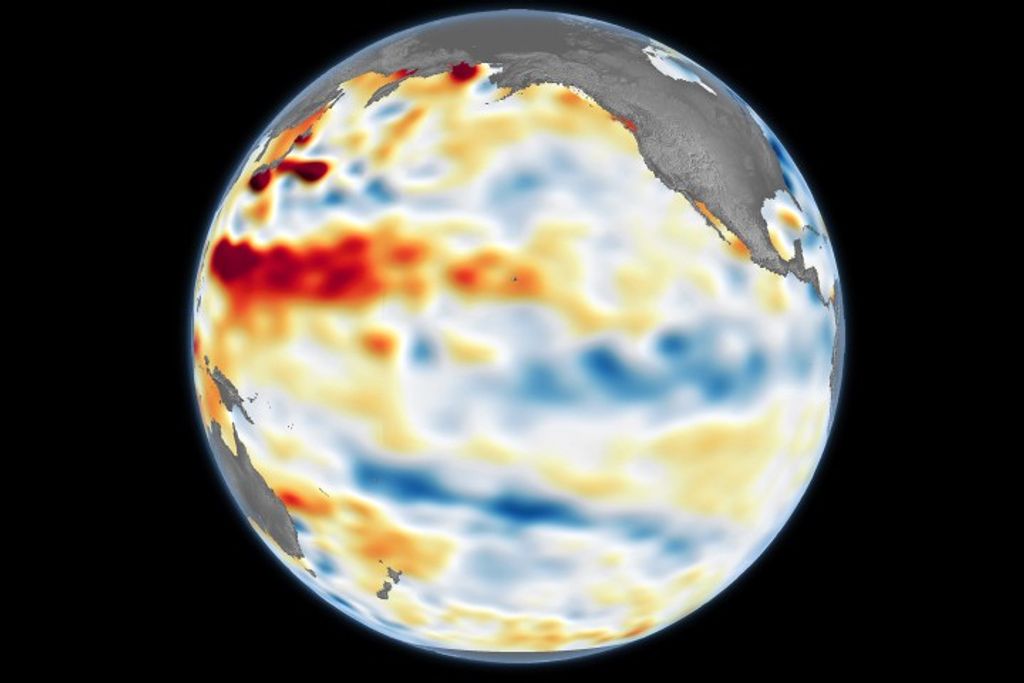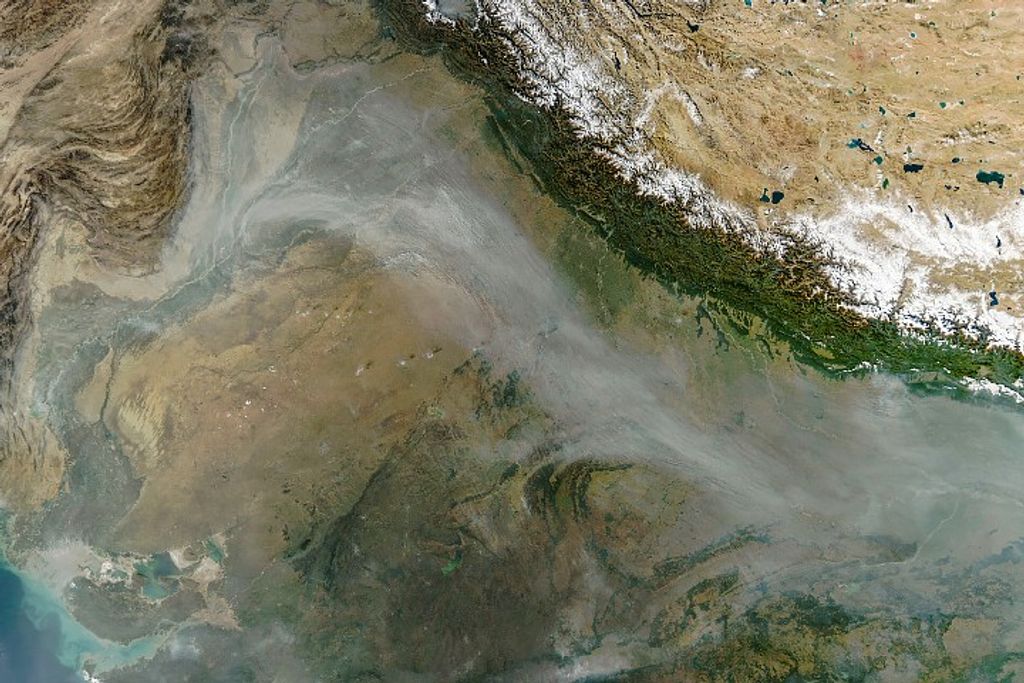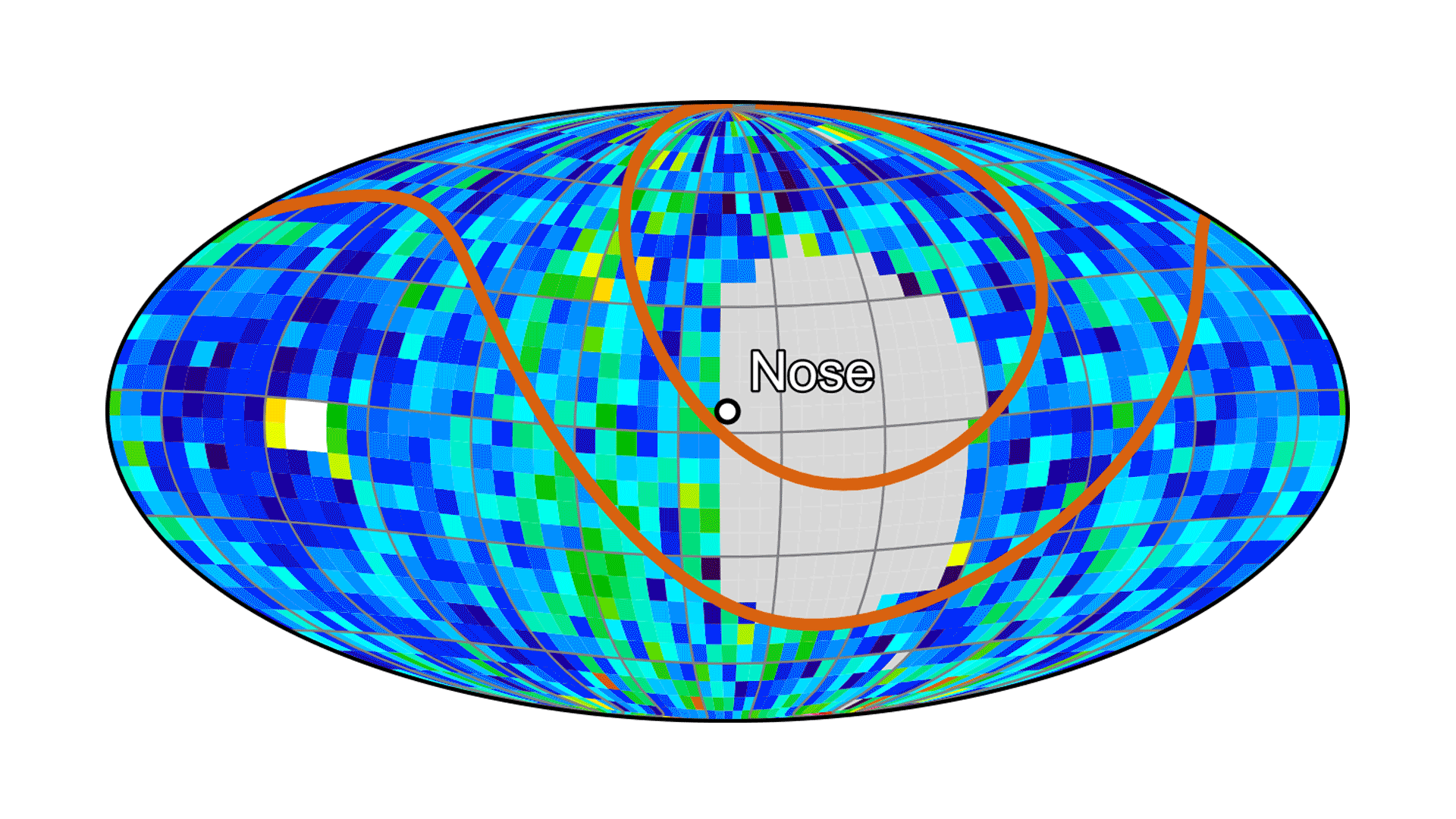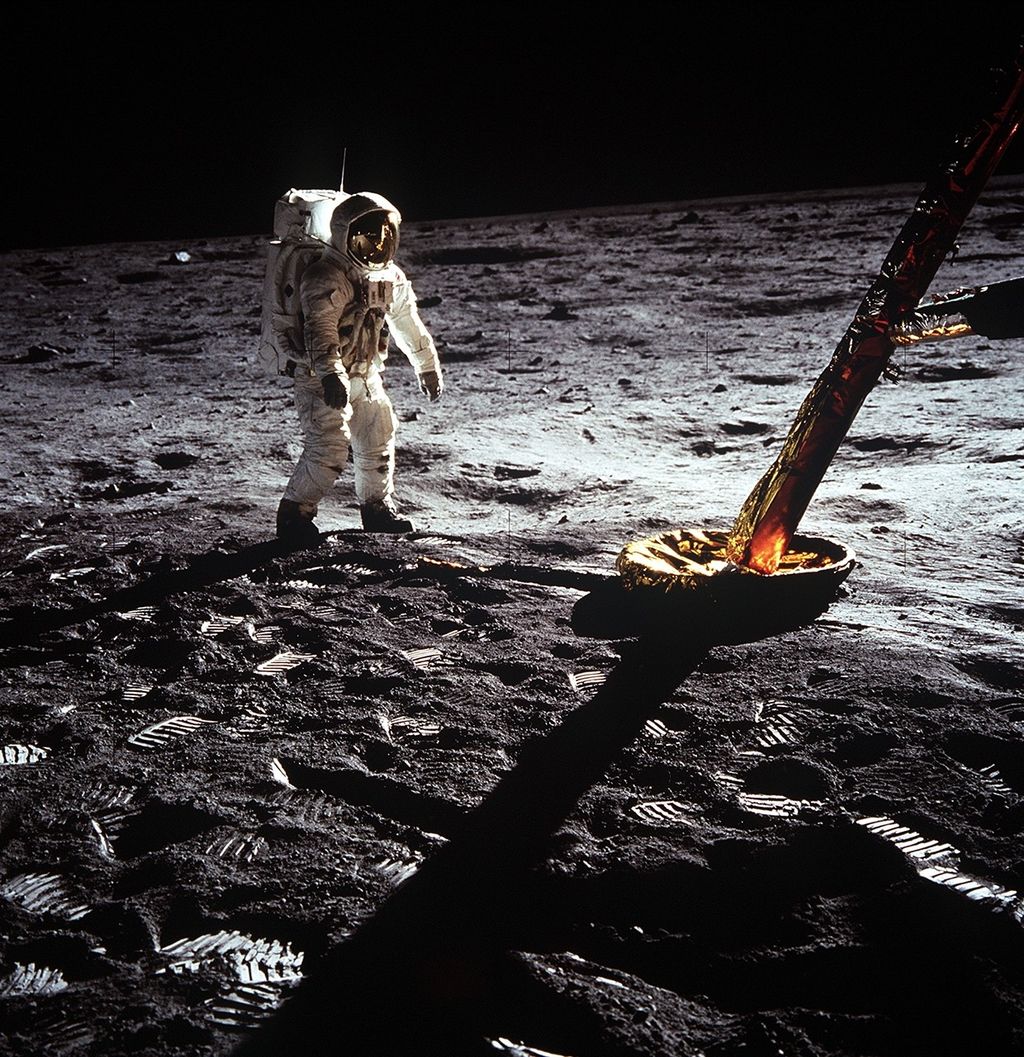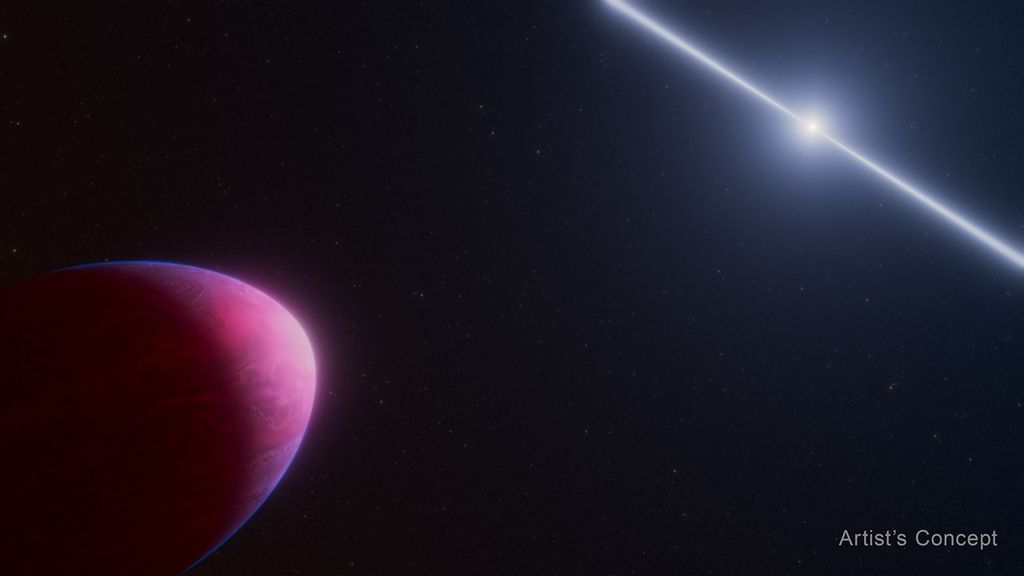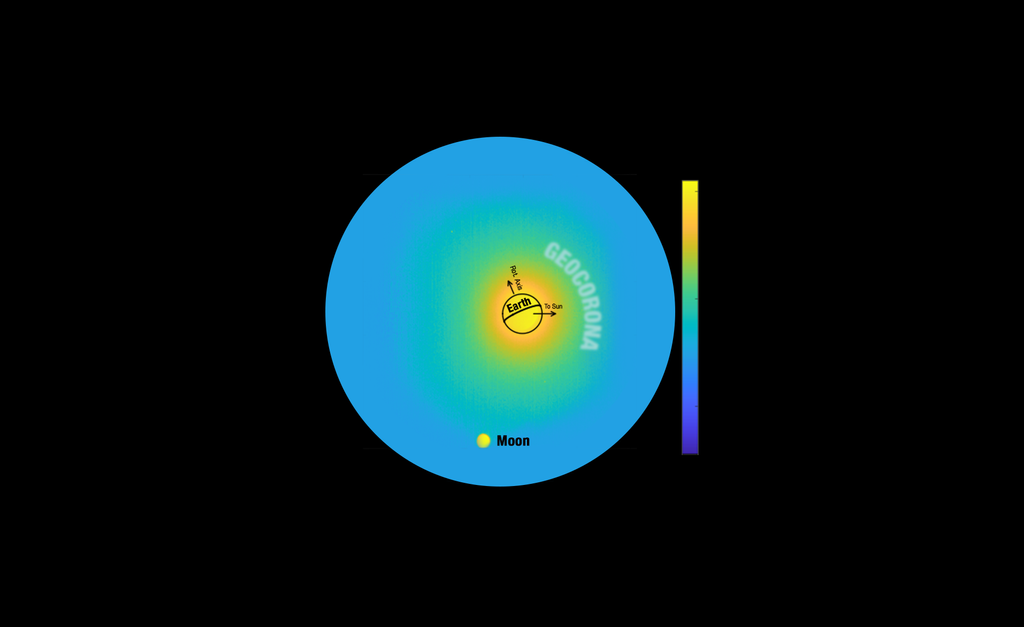1 min read
HST/NICMOS Images of 2M1207 and GPCC at Three Near-Infrared Wavelengths
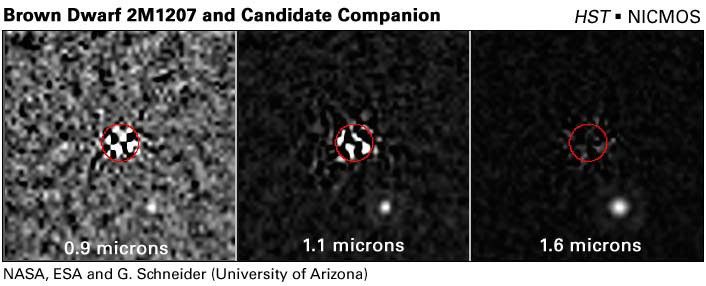
These are Hubble Near Infrared Camera and Multi-Object Spectrometer (NICMOS) Camera 1 images of 2M1207's giant planetary companion candidate at three increasingly longer near-infrared wavelengths [left to right: 0.9, 1.1, and 1.6 microns]. The light from 2M1207 itself has been greatly reduced by subtracting a second image of the star taken with Hubble rolled to a different orientation in the sky. Imperfections in the "differential roll" subtraction technique give rise to optical artifacts at the location of 2M1207, which is centered in the red circle of 0.2 arc second radius. The giant planetary companion candidate is the white disk located outside and to the lower right of the red circle. 2M1207, a young brown dwarf of spectral type M8.5, is itself quite red - 11 times fainter at 0.9 microns than it is at 1.6 microns. The giant planetary companion candidate at 0.9 microns is significantly redder in comparison, 44 times fainter at 0.9 microns than it is at 1.6 microns where, at that shorter wavelength, it is also 720 times fainter than 2M1207.
About the Object
- R.A. PositionR.A. PositionRight ascension – analogous to longitude – is one component of an object's position.12h 7m 33.46s
- Dec. PositionDec. PositionDeclination – analogous to latitude – is one component of an object's position.-39° 32' 53.99"
- ConstellationConstellationOne of 88 recognized regions of the celestial sphere in which the object appears.Hydra
- DistanceDistanceThe physical distance from Earth to the astronomical object. Distances within our solar system are usually measured in Astronomical Units (AU). Distances between stars are usually measured in light-years. Interstellar distances can also be measured in parsecs.225 light-years away (70 parsecs)
- DimensionsDimensionsThe physical size of the object or the apparent angle it subtends on the sky.This image is 2.5 arcseconds wide.
About the Data
- Data DescriptionData DescriptionProposal: A description of the observations, their scientific justification, and the links to the data available in the science archive.
Science Team: The astronomers who planned the observations and analyzed the data. "PI" refers to the Principal Investigator.The Hubble image was created from HST data from proposal 10176. The science team is composed of: NASA, ESA, G. Schneider (Steward Observatory, Univ. of Arizona), I. Song (Gemini Observ.), B. Zuckerman, E. Becklin (Univ. of California, Los Angeles), P. Lowrance (California Inst. of Technology), B. Macintosh (Lawrence Livermore National Laboratory), M. Bessell (Australian National Univ.), and C. Dumas and G. Chauvin (European Southern Observ.). - InstrumentInstrumentThe science instrument used to produce the data.HST>NICMOS
- Exposure DatesExposure DatesThe date(s) that the telescope made its observations and the total exposure time.August 2004
- FiltersFiltersThe camera filters that were used in the science observations.F090M (0.80-1.00 microns), F110M (1.00-1.20 microns), F160W (1.40-1.80 microns)
- Object NameObject NameA name or catalog number that astronomers use to identify an astronomical object.2M1207, 2MASSWJ 1207334-393254
- Object DescriptionObject DescriptionThe type of astronomical object.Brown Dwarf with Companion
- Release DateJanuary 10, 2005
- Science ReleaseHubble’s Infrared Eyes Home in on Suspected Extrasolar Planet
- CreditNASA, ESA, G. Schneider (Steward Observ., Univ. of Arizona), I. Song (Gemini Observ.), B. Zuckerman, E. Becklin (Univ. of California, Los Angeles), P. Lowrance (California Inst. of Technology), B. Macintosh (Lawrence Livermore National Laboratory), M. Bessell (Australian National Univ.), and C. Dumas and G. Chauvin (European Southern Observ.)
Related Images & Videos

Hubble Infrared View of Extrasolar Planet Candidate
This is an artificial-color Hubble Near Infrared Camera and Multi-Object Spectrometer (NICMOS) infrared-light view of the brown dwarf star 2MASSWJ 1207334-393254 (aka 2M1207) and giant planet companion candidate. The possible companion, estimated to be about five times the mass...
Share
Details
Last Updated
Aug 17, 2025
Contact
Media
Claire Andreoli
NASA’s Goddard Space Flight Center
Greenbelt, Maryland
claire.andreoli@nasa.gov










